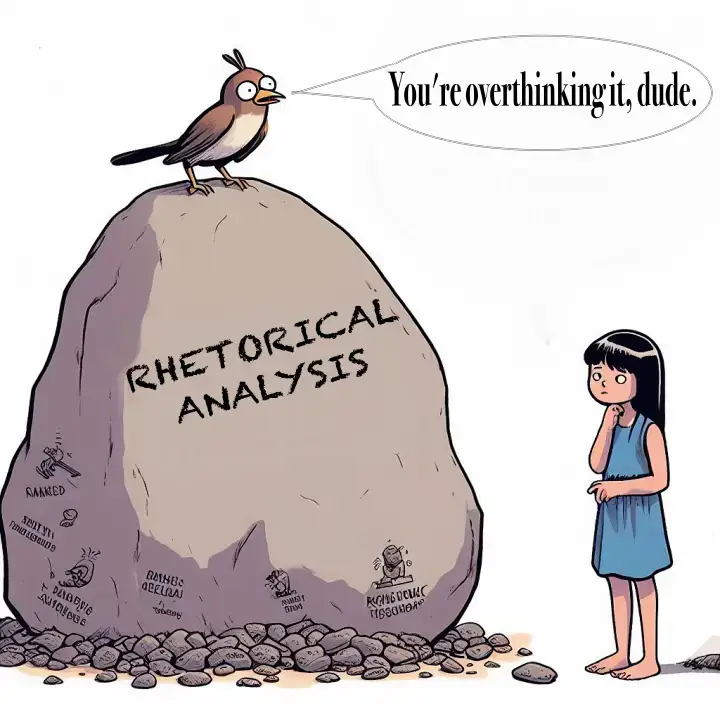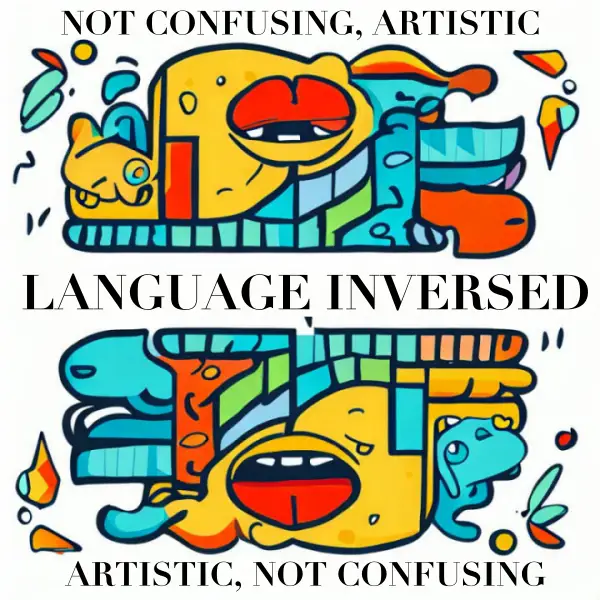Narratology, derived from the Latin word "narrare" meaning "to tell," is the
study and analysis of narratives. It explores the structure, elements, and
functions of storytelling across various forms of media, including literature,
film, and even video games. Narratology provides a framework for understanding
how stories are constructed and the impact they have on individuals and
society as a whole.
What is narratology?
At its core, narratology seeks to unravel the complexities of storytelling by
examining the relationships between the narrator, the narrative, and the
audience. It delves into the techniques employed by authors and creators to
convey their stories, such as point of view, plot development, and character
interactions. By understanding the underlying principles of narratology, one
can gain a deeper appreciation for the art of storytelling and its effects on
our lives.
The importance of studying narration
The study of narration is crucial for several reasons. Firstly, narratives are
a fundamental aspect of human communication and have been used since ancient
times to transmit knowledge, values, and cultural traditions. By studying
narration, we can gain insights into the human experience and the ways in
which stories shape our understanding of the world.
Secondly, narratology allows us to analyze and interpret the messages embedded
within narratives. By closely examining the narrative structure and elements,
we can uncover the underlying themes, symbolism, and social commentary
contained within a story. This analysis provides a deeper understanding of the
author's intentions and the broader implications of the narrative.
Lastly, narratology provides a framework for evaluating and critiquing
narratives across different media. Whether it is analyzing a novel, a film, or
a television series, understanding the principles of narratology allows us to
assess the effectiveness of storytelling techniques and their impact on the
audience. This critical analysis can lead to a more nuanced appreciation of
narratives and the ways in which they shape our cultural landscape.
The components of narrative structure
Narrative structure consists of various elements that work together to create
a cohesive and engaging story. These components include characters, plot,
setting, point of view, and theme. Characters are the individuals or entities
that drive the story forward, while the plot refers to the sequence of events
that unfold. The setting provides the context in which the narrative takes
place, while the point of view determines the perspective from which the story
is told. Finally,
the theme represents the underlying message or moral of the story.
Key concepts in narratology - Mikhail Bakhtin's theories
Mikhail Bakhtin, a Russian literary theorist, made significant contributions
to the field of narratology with his theories on dialogism and heteroglossia.
Dialogism refers to the presence of multiple voices and perspectives within a
narrative, creating a dynamic and interactive experience for the reader.
Heteroglossia, on the other hand, acknowledges the diversity of languages,
dialects, and discourses within a narrative, reflecting the complexities of
real-life communication.
Heteroglossia and dialogism in narratology
Bakhtin's concept of heteroglossia challenges the notion of a single, unified
narrative voice. Instead, it recognizes the multiplicity of voices and
languages that exist within a narrative, representing different social,
cultural, and ideological perspectives. This recognition of heteroglossia
emphasizes the richness and complexity of storytelling, as it reflects the
diverse range of experiences and viewpoints that shape our world.
Dialogism, another key concept in Bakhtin's theory, highlights the interactive
nature of narratives. According to Bakhtin, a narrative is not a monologue but
rather a dialogue between the narrator and the reader, as well as between
different characters within the story. This dialogic quality creates a dynamic
and engaging reading experience, as the audience actively participates in the
construction of meaning.
Chronotope - the intersection of time and space in narrative
Another important concept in narratology is the chronotope, which refers to
the intersection of time and space within a narrative. The chronotope sets the
stage for the events of the story, providing a context for the characters and
their actions. It shapes the narrative by establishing the temporal and
spatial boundaries within which the story unfolds, influencing the pace,
atmosphere, and overall structure of the narrative.
The relevance of narratology in literary analysis
Narratology plays a crucial role in literary analysis by providing a framework
for understanding and interpreting texts. By examining the narrative
structure, point of view, and other elements, literary critics can uncover the
underlying themes, symbols, and social commentary embedded within a story.
This analysis provides valuable insights into the author's intentions, the
historical and cultural context in which the text was produced, and its impact
on readers.
Applying narratology to different forms of media
While narratology originated in the field of literary analysis, its principles
can be applied to a wide range of media, including film, television, and even
video games. By understanding the techniques and conventions of storytelling,
one can analyze and evaluate narratives in these different forms of media.
This interdisciplinary approach allows for a deeper understanding of the ways
in which narratives are constructed and the impact they have on their
audiences.
Further Resources
Narratology provides a comprehensive framework for understanding and analyzing
narratives. By examining the structure, elements, and functions of
storytelling, one can gain insights into the complex dynamics of narrative
communication. Whether it is studying literary narratology or applying
narratological principles to other forms of media, the power of narrative is
undeniable. To further explore this fascinating field, readers are encouraged
to delve into the works of narratology scholars such as Mikhail Bakhtin,
particularly his influential book The Dialogic Imagination.
Discover the profound impact of narratives and unlock their hidden meanings
through the study of narratology. Expand your knowledge and appreciation of
storytelling by exploring further resources on narratology and its
applications in various forms of media. Embrace the power of narrative and
embark on a journey of understanding and interpretation.
 Question? Comment? Rebuttal?
Question? Comment? Rebuttal?
Copy the article's title or link to send with your response.

ARTICLE
June 14, 2024
Fallacies & Rhetorical Devices: Thank You for Smoking
How rhetoric uses indirect argument, emotional appeals, and rhetorical questions to convince the audience. Despite the lack of concrete evidence or counterarguments, audiences are receptive to these persuasive techniques, demonstrating the power of rhetoric in influencing opinions and the importance of critical analysis to avoid being misled by flawed reasoning.
READ

ARTICLE
November 15, 2023
A Complete Guide to Understanding & Using Rhetorical Analysis
Writers can improve their ability to influence their audience by studying how different media, like film, writing, symbols, and speeches, communicate and shape meaning. This is the goal of rhetorical analysis.
READ

ARTICLE
November 10, 2023
Leprechauns: The Modern Iteration
A leprechaun is a small, bearded, and green-clad man from Irish folklore who has magical powers, such as granting wishes or hiding a pot of gold at the end of a rainbow. While other mythical creatures, such as vampires, have changed drastically over time and media, the leprechaun has remained largely consistent with its original depiction. The contrast between the ancient tale of “The Adventure of Fergus son of Léti” and the modern movie, Leprechaun, shows how the leprechaun has evolved, but also how it has preserved its core features.
READ

ARTICLE
October 31, 2023
Streamline Your Writing: A Pleonasm Survival Guide
Writing concisely and impactfully is a skill that can be mastered with practice and attention to detail. One of the key aspects of concise and impactful writing is avoiding pleonasms, which are unnecessary words or phrases that dilute your message. Learn how to identify and eliminate pleonasms, how to avoid common pleonasms, and how to edit and proofread your content to eliminate pleonasm.
READ

ARTICLE
October 28, 2023
Death of the Centaur in Modern Literature
Centaurs are half-man and half-horse creatures that originate from ancient Greek myths. The article examines how centaurs once embodied the tension between the civilized and the barbaric aspects of humanity, and how their symbolism became an idiomatic motif of fantasy and science fiction.
READ

ARTICLE
October 4, 2023
The Power of Narrative: A Comprehensive Guide to Defining Narratology
Discover the fascinating world of narratology and its impact on literary analysis. Explore the intricate narrative structures and theories of Mikhail Bakhtin, shedding new light on the art of storytelling.
READ

ARTICLE
October 4, 2023
Boost Your Creative Writing Skills with Action-Packed Gerunds, Adjectives, & Adverbs
Learn how to pack your fiction with action and captivate your readers from the very first page. Discover the importance of action in writing and explore the power of gerunds, adjectives, and adverbs in creating dynamic and engaging prose. Discover how to use gerunds to add action to your writing, enhance your descriptions with descriptive adjectives, and power up your prose with impactful adverbs. With examples, tips, and exercises, this article is a valuable resource for any writer looking to elevate their storytelling skills.
READ

ARTICLE
October 3, 2023
How to Embark on The Write Journey to Writing Success
To become a successful writer, one must navigate a path filled with ups and downs. This journey requires determination, hard work, perseverance, and a lot of luck. Setting clear objectives is the initial step toward accomplishing success. With daily writing practice, one can develop their skills and derive pleasure from the process. Overcoming distractions at home is vital for maintaining a consistent writing routine. Drawing inspiration from diverse sources can spark creativity and keep the writing process thrilling. Ultimately, embarking on the journey to become a writer is a personal and transformative experience that necessitates dedication and introspection.
READ

ARTICLE
September 27, 2023
Exploring Human Existence: Writing from an Existential Perspective
Examine the philosophical and literary movement of existentialism, which seeks to understand human existence in an absurd and irrational world. The author explains the key concepts of existentialism, such as existence precedes essence, freedom, and responsibility, and how they influence the writing of existentialist authors. The author also analyzes the role of religion, especially Christianity, in existentialist thought and writing.
READ

ARTICLE
September 22, 2023
Why you won't sell books on Social Media
The Reality of Social Media Advertising for Book Marketing: A Complex Method for Engagement and Effectiveness that Fails to Deliver This article delves into the intricacies of social media advertising and engagement for book marketing. It highlights the limitations of the general assumption that people click on social media ads and make purchases. By understanding the multifaceted nature of social media platforms and the diverse reasons individuals engage with them, the article emphasizes the need for a different approach to advertising books.
READ

ARTICLE
September 19, 2023
Unleash Your Creativity: Mastering the Art of Writing with Inverse Language Techniques
Learn how to use inverse language techniques to spice up your writing and captivate your readers. This article will show you the benefits, examples, and tips of this powerful writing tool.
READ

ARTICLE
September 18, 2023
Adverbs: Misunderstood, Abused, & Powerful Tools
Adverbs are often misunderstood and abused by writers, but they can also be powerful tools to express yourself. This article explains how to use adverbs wisely and avoid the pitfalls of overusing or misusing them. It also gives examples of how adverbs can add flavor and nuance to your writing, especially in dialogue.
READ

ARTICLE
August 2, 2023
Strategies to Handle Publisher Rejection & Not Give Up The Writing Dream
How do you deal with publisher rejection and keep pursuing your writing dream? It’s not easy, but it’s possible. Learn to handle publisher rejection and not let it stop you from writing. You will explore different strategies and mindsets that can help you overcome rejection, learn from it, and move on with confidence and resilience. You will also learn how to understand the publisher’s point of view and increase your chances of getting published.
READ

ARTICLE
July 31, 2023
How to Deal with Writing Pet Peeves & Learn from Them
What are some of the things that annoy you as a writer? Maybe it’s the grammar police who nitpick every mistake, or the plagiarists who steal your ideas, or the clichés that make your writing boring, or the unrealistic expectations that make you doubt yourself. You will find out how to deal with these pet peeves and turn them into learning opportunities for your writing craft.
READ

ARTICLE
July 26, 2023
Learn to Deal & Not Deal With Writing Critics
What passes as constructive criticism todqy provides no benefit for writers. Telling people to be nice when critiquing work has a blinding effect that adds a positive ring to a sad manuscript. Likewise, literature's trolls dish out banal, useless, opinionated criticism as if they possessed a degree from every ivy league school. Learn what not to do and what comments not to read in the humorous piece about writing and criticism.
READ

ARTICLE
July 7, 2023
How to Avoid Pedantic Editing & Create Original, Stylish Writing
How can writers express themselves freely and creatively in a world where editors and critics enforce strict rules and standards? How can writers revise their work without losing their voice and vision? Discover how to overcome the challenges and frustrations of editing, and how to break free from the constraints and conventions of writing.
READ

ARTICLE
June 11, 2023
Exploring the Depths of Human Experience
A writer reflects on his life experiences and how they have shaped his writing career. He shares his insights on courage, honesty, and self-expression, and encourages other writers to face their fears and write the scariest shit they can think of.
READ

ARTICLE
June 10, 2023
Writing isn’t some mystical mystery
As it turns out, writing isn’t just about putting words on a page. Explore the deeper themes of legacy, reputation, and self-delusion through personal anecdotes, poetry, and introspection. Consider the power and purpose of writing.
READ

ARTICLE
June 9, 2023
Writing's Struggles & Joys - Advice From an Old writer
An old writer’s advice to young writers: don’t think about writing poetry or prose, just write what’s on your mind now. A heartfelt piece about writing and loss, encouraging young writers to write without overthinking.
READ

ARTICLE
April 24, 2023
Learn to Write Mosaic Poetry To Improve All Verse
Working with mosaic poetry can help you become skilled at writing in meter because it allows you to hear how words fit together more effectively when spoken. This practice can lead to the creation of more complex poetry with refined meaning as you learn to incorporate other techniques into your own work.
READ

ARTICLE
April 24, 2023
How Writing Teaches You: The Craft and the Lessons
Learn how the craft of writing teaches you by perpetually teaching, resolving, and articulating your perceptions. This article will show you how writing helps you to develop your critical thinking, creativity, and communication skills. You will also see how writing can enrich your personal and professional life.
READ

ARTICLE
April 24, 2023
Thinking first-person POV is lazy writing isn’t wrong — it’s stupid.
An arguement that third-person POV lacks realness and natural voice, making it difficult for readers to become emotionally invested.
READ

ARTICLE
April 24, 2023
Persuasive Writing: The Key to Successful Writing
Learn why persuasion is the primary goal of writing and how to determine if you write persuasively.
READ

ARTICLE
April 24, 2023
How Ignoring Theme Ruined the Asexual, Female, Blue Alien Story
How do you create a theme for your story? Why is theme important for fiction writing? Learn how theme gives meaning and direction to your story, and how ignoring theme can lead to derivative and inconsistent stories. You will also find out how to use theme as a guide for your worldbuilding and character development, and how to avoid common pitfalls when writing about different cultures and perspectives.
READ

ARTICLE
April 24, 2023
How to Write a Story That Comes True by Lying to Yourself
This author shares a bizarre and hilarious experience of writing a story about a guy who lies a lot, and then having the same guy lie to him by telling him the same story that he wrote, without knowing that he wrote it. The author also discusses the idea that to write a compelling narrative, a writer must convince himself that others believe his lies or story’s fictional elements.
READ

ARTICLE
April 24, 2023
Mimesis: The Secret to Realistic and Engaging Writing
Learn how to use mimesis to write more realistically and engagingly. Mimesis is the imitation of reality in art and literature. This article will teach you how to reduce unnecessary pronouns, narrative distance, and verbosity in your writing.
READ

ARTICLE
April 24, 2023
The Secret of Writing Engaging Free Verse: Syllabic Poetry
Free verse is a common form of poetry with no specific requirements for meter or rhythm. It allows writers freedom but can cause reader engagement issues. Readers may need to pay attention to mechanics such as stanza breaks and punctuation to understand the poem’s meaning. Free verse poems are stylized by individual poets, so readers must study their unique forms and attributes. This need to study requires poetry to be engaging.
READ

ARTICLE
April 24, 2023
How to Stop Undermining Your Writing with Faux Humility
How do you write with confidence and authority? How do you avoid faux humility in your writing? Dpn't write with faux humility because it harms your writing and reinforces ignorance.Find out how to write with facts, logic, and evidence, and how to be open to criticism and feedback. Discover how to use writing as a tool for learning and seeking the truth.
READ

ARTICLE
April 24, 2023
Christians, Christian T. Roll, & Thoughts on Satire
Learn about satire. Satire is a literary genre that criticizes human nature and society. It can bring attention to overlooked issues, advocate for social reforms, and provide new perspectives on issues. Satire can also open up discussions about justice, morality, and stigmas. It is important for writers to understand and learn to use satire to make their writing more persuasive.
READ
 Question? Comment? Rebuttal?
Question? Comment? Rebuttal?





























